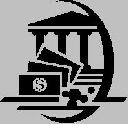
 |
|
| Financial Terms | |
| Closed Economy |
|
Information about financial, finance, business, accounting, payroll, inventory, investment, money, inventory control, stock trading, financial advisor, tax advisor, credit.
Main Page: financial advisor, tax advisor, business, credit, inventory, money, accounting, stock trading, Also see related: condo, homebuyer, first time homebuyer, real estate, financing, home financing, buy home, credit, insurance, |
Definition of Closed Economy
Closed EconomyAn economy in which imports and exports are very small relative to GDP and so are ignored in macroeconomic analysis. Contrast with open economy.
Related Terms:Open EconomyAn economy which engages in a significant amount of trade. Contrast with closed economy. Closed-end fundAn investment company that sells shares like any other corporation and usually does not Closed-end mortgageMortgage against which no additional debt may be issued. global economyan economy characterized by the international Underground EconomyEconomic activity not observed by tax collectors and government statisticians. Open-end fundAlso called a mutual fund, an investment company that stands ready to sell new shares to the Annual fund operating expensesFor investment companies, the management fee and "other expenses,"  Balanced fundAn investment company that invests in stocks and bonds. The same as a balanced mutual fund. Balanced mutual fundThis is a fund that buys common stock, preferred stock and bonds. The same as a Beta (Mutual Funds)The measure of a fund's or stocks risk in relation to the market. A beta of 0.7 means Beta equation (Mutual Funds)The beta of a fund is determined as follows: Buy on openingTo buy at the beginning of a trading session at a price within the opening range. CalendarList of new issues scheduled to come to market shortly. Calendar effectThe tendency of stocks to perform differently at different times, including such anomalies as Capital expendituresAmount used during a particular period to acquire or improve long-term assets such as Cash dividendA dividend paid in cash to a company's shareholders. The amount is normally based on  Cash-surrender valueAn amount the insurance company will pay if the policyholder ends a whole life Closed-end mortgageMortgage against which no additional debt may be issued. Cost of fundsInterest rate associated with borrowing money. Cum dividendWith dividend. Cumulative dividend featureA requirement that any missed preferred or preference stock dividends be paid DependentAcceptance of a capital budgeting project contingent on the acceptance of another project. DetrendTo remove the general drift, tendency or bent of a set of statistical data as related to time. Discounted dividend model (DDM)A formula to estimate the intrinsic value of a firm by figuring the DividendA dividend is a portion of a company's profit paid to common and preferred shareholders. A stock Dividend clawbackWith respect to a project financing, an arrangement under which the sponsors of a project Dividend clienteleA group of shareholders who prefer that the firm follow a particular dividend policy. For  Dividend discount model (DDM)A model for valuing the common stock of a company, based on the Dividend growth modelA model wherein dividends are assumed to be at a constant rate in perpetuity. Dividend limitationA bond covenant that restricts in some way the firm's ability to pay cash dividends. Dividend payout ratioPercentage of earnings paid out as dividends. Dividends per shareAmount of cash paid to shareholders expressed as dollars per share. Dividend policyAn established guide for the firm to determine the amount of money it will pay as dividends. Dividend rateThe fixed or floating rate paid on preferred stock based on par value. Dividend reinvestment plan (DRP)Automatic reinvestment of shareholder dividends in more shares of a Dividend rightsA shareholders' rights to receive per-share dividends identical to those other shareholders receive. Dividend yield (Funds)Indicated yield represents return on a share of a mutual fund held over the past 12 Dividend yield (Stocks)Indicated yield represents annual dividends divided by current stock price. Dividends per shareDividends paid for the past 12 months divided by the number of common shares Economic dependenceExists when the costs and/or revenues of one project depend on those of another. Employee stock fundA firm-sponsored program that enables employees to purchase shares of the firm's Endogenous variableA value determined within the context of a model. Endowment fundsInvestment funds established for the support of institutions such as colleges, private End-of-year conventionTreating cash flows as if they occur at the end of a year as opposed to the date Exclusionary self-tenderThe firm makes a tender offer for a given amount of its own stock while excluding Extendable bondBond whose maturity can be extended at the option of the lender or issuer. Extendable notesNote the maturity of which can be extended by mutual agreement of the issuer and Extra or special dividendsA dividend that is paid in addition to a firm's "regular" quarterly dividend. Ex-dividendThis literally means "without dividend." The buyer of shares when they are quoted ex-dividend Ex-dividend dateThe first day of trading when the seller, rather than the buyer, of a stock will be entitled to Federal fundsNon-interest bearing deposits held in reserve for depository institutions at their district Federal Federal funds marketThe market where banks can borrow or lend reserves, allowing banks temporarily Federal funds rateThis is the interest rate that banks with excess reserves at a Federal Reserve district bank Fixed-price tender offerA one-time offer to purchase a stated number of shares at a stated fixed price, Forward Fed fundsFed funds traded for future delivery. Fund familySet of funds with different investment objectives offered by one management company. In many Fundamental analysisSecurity analysis that seeks to detect misvalued securities by an analysis of the firm's Fundamental betaThe product of a statistical model to predict the fundamental risk of a security using not Fundamental descriptorsIn the model for calculating fundamental beta, ratios in risk indexes other than Funded debtDebt maturing after more than one year. Funding ratioThe ratio of a pension plan's assets to its liabilities. Funding riskRelated: interest rate risk Funds From Operations (FFO)Used by real estate and other investment trusts to define the cash flow from Global fundA mutual fund that can invest anywhere in the world, including the U.S. Hedge fundA fund that may employ a variety of techniques to enhance returns, such as both buying and High-coupon bond refundingRefunding of a high-coupon bond with a new, lower coupon bond. Homemade dividendSale of some shares of stock to get cash that would be similar to receiving a cash dividend. Income fundA mutual fund providing for liberal current income from investments. Independent projectA project whose acceptance or rejection is independent of the acceptance or rejection of Index fundInvestment fund designed to match the returns on a stockmarket index. Indicated dividendTotal amount of dividends that would be paid on a share of stock over the next 12 months International fundA mutual fund that can invest only outside the United States. International Monetary FundAn organization founded in 1944 to oversee exchange arrangements of LendTo provide money temporarily on the condition that it or its equivalent will be returned, often with an Liability funding strategiesInvestment strategies that select assets so that cash flows will equal or exceed Load fundA mutual fund with shares sold at a price including a large sales charge -- typically 4% to 8% of Low-coupon bond refundingRefunding of a low coupon bond with a new, higher coupon bond. Liquidating dividendPayment by a firm to its owners from capital rather than from earnings. Match fundA bank is said to match fund a loan or other asset when it does so by buying (taking) a deposit of Money market fundA mutual fund that invests only in short term securities, such as bankers' acceptances, Mutual fundMutual funds are pools of money that are managed by an investment company. They offer Mutual fund theoremA result associated with the CAPM, asserting that investors will choose to invest their Net advantage of refundingThe net present value of the savings from a refunding. No load mutual fundAn open-end investment company, shares of which are sold without a sales charge. No-load fundA mutual fund that does not impose a sales commission. Related: load fund NonrefundableNot permitted, under the terms of indenture, to be refundable. Objective (mutual fund)The fund's investment strategy category as stated in the prospectus. There are Open accountArrangement whereby sales are made with no formal debt contract. The buyer signs a receipt, Open bookSee: unmatched book. Open contractsContracts which have been bought or sold without the transaction having been completed by Open interestThe total number of derivative contracts traded that not yet been liquidated either by an Open (good-til-cancelled) orderAn individual investor can place an order to buy or sell a security. That Open positionA net long or short position whose value will change with a change in prices. Open repoA repo with no definite term. The agreement is made on a day-to-day basis and either the Open-end mortgageMortgage against which additional debts may be issued. Related: closed-end mortgage. Open-market operationPurchase or sale of government securities by the monetary authorities to increase or Open-market purchase operationA systematic program of repurchasing shares of stock in market Open-outcryThe method of trading used at futures exchanges, typically involving calling out the specific Opening, theThe period at the beginning of the trading session officially designated by the exchange during Opening priceThe range of prices at which the first bids and offers were made or first transactions were Opening purchaseA transaction in which the purchaser's intention is to create or increase a long position in Opening saleA transaction in which the seller's intention is to create or increase a short position in a given Overfunded pension planA pension plan that has a positive surplus (i.e., assets exceed liabilities). Path dependent optionAn option whose value depends on the sequence of prices of the underlying asset Related to : financial, finance, business, accounting, payroll, inventory, investment, money, inventory control, stock trading, financial advisor, tax advisor, credit. |